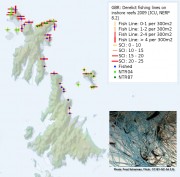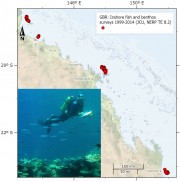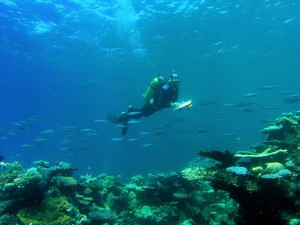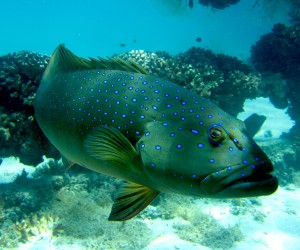NERP TE Project 8.2 - Assessing the ecological effects of management zoning on inshore reefs of the Great Barrier Reef Marine Park (JCU)
Project summary
This project has provided convincing evidence that no-take marine reserves have significantly improved the status of fished species in the Great Barrier Reef Marine Park (GBRMP). The project has also established the basis for assessing the role of no-take marine reserve networks in protecting biodiversity, sustaining ecosystem goods and services and providing a buffer against natural disturbances, such as extreme weather events and the cumulative impacts of climate change.
Why we need this research
Following major changes to the zoning of the GBRMP in 2004, a large number of no-take marine reserves were established. It is important for the Great Barrier Reef Marine Park Authority (GBRMPA) and fisheries managers to have accurate information describing the effects that this increase in the number and area of no-take reserves has had on biodiversity and fish populations in the GBRMP.
Research user focus
The project will deliver important information for fisheries managers in Queensland and other states about the impact of no-take zones on target fish populations, as well as conservation planners/managers and tourism bodies. These research-user organisations include the GBRMPA, DSEWPaC and the Queensland Department of Agriculture, Fisheries and Forestry.
Outcomes
This project will provide a direct assessment of the ecological effects of multiple-use zoning on inshore reefs of the GBRMP. Long-term surveys of reef fish and coral communities within no-take reserves and in areas that have remained open to fishing will provide information on:
- The effects of no-take reserves on populations of both species that are fished and other non-fished species
- Variations in structure of fish communities due to the reserves and natural disturbances
- Structure and dynamics of marine species on the sea bed
- Coral health, bleaching, incidence and severity of coral disease and coral predators.
Reports, Publications and News
For more information see Project 8.2 'Do no-take marine reserves contribute to biodiversity and fishery sustainability? Assessing the effects of management zoning on inshore reefs of the Great Barrier Reef Marine Park' on the NERP Tropical Ecosystems Hub site.
Datasets

This project is providing a direct assessment of the ecological effects of multiple-use zoning on inshore reefs of the GBRMP. Underwater visual census (UVC) monitoring of fish and benthic communities is being carried out at 50 no-take marine reserve (green zone) sites and at 50 sites that have remained open to fishing within the Palm, Magnetic, Whitsunday and Keppel Island groups. Long-term monitoring surveys are providing information on:
1. The effects of no-take marine reserves on populations of both species that are fished and other non-fished species.

This dataset consists of site means of the density of derelict fishing line, the percent cover of major benthic categories on fringing coral reefs of the Keppel, Whitsunday and Palm Island groups, and the accumulation rate of fishing line at ten sites in the Palm Islands between 2007 and 2009.

This dataset consists of site and zone means of the percent cover of major benthic categories and the density of fish functional groups on fringing coral reefs of the Keppel, Whitsunday and Palm Island groups, as a result of monitoring surveys carried out between 1999 and 2014.
This data extract summarises the results of a long-term monitoring project that assesses the effects of no-take marine reserve zoning in the Great Barrier Reef Marine Park.








